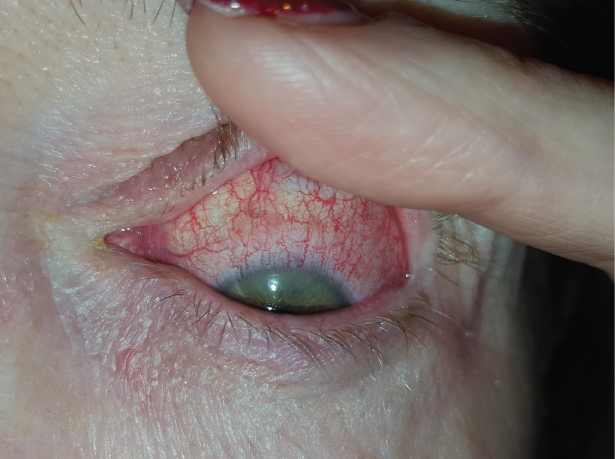Bacterial conjunctivitis, Face-pie
A 42-year-old female was referred to eye casualty for suspected left orbital cellulitis with swollen eyelids, photosensitivity, pain and yellow discharge. 24 hours previously, she had played a party game wherein whipped cream was flung into her left eye; she immediately wiped the eye clean. On examination, her left eyelid was oedematous and conjunctiva was chemotic. A conjunctival swab grew Streptococcus pneumoniae sensitive to chloramphenicol - she recovered uneventfully with chloramphenicol eyedrops.
Previously documented novel modes of transmission for bacterial eye infections include seminal fluid [1] for gonococcal and eye cosmetics [2] for chlamydial conjunctivitis. To our knowledge this is the first reported case of bacterial conjunctivitis resulting from the increasingly popular party game where players are 'creamed' by the spring-loaded toy arm (Figure 1).
 Figure 1: Bacterial conjunctivitis.
View Figure 1
Figure 1: Bacterial conjunctivitis.
View Figure 1
- Novelty games involving physical 'pranks' can be a source of opportunistic bacterial infections, for example conjunctivitis in this case.
- Detailed history taking can help clinicians formulate sensible differential diagnoses and provide the correct treatment.
None.
Patient has given consent for the publication of this case report and photography.